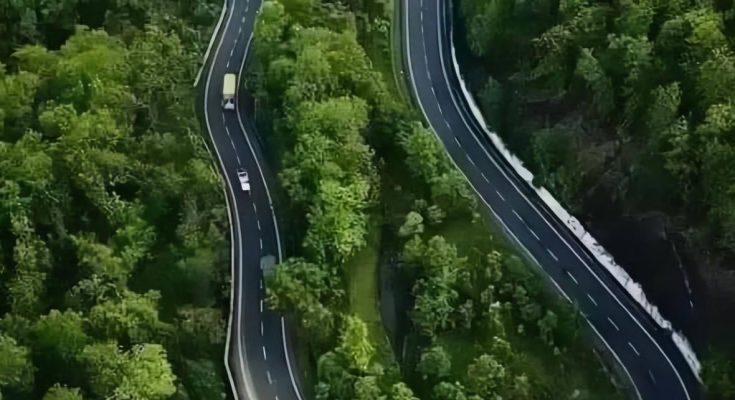When it comes to urban planning and road design, shortcuts are a widely discussed topic. Their primary purpose is to improve traffic flow and reduce congestion, offering drivers alternative routes to reach their destinations more quickly. However, one thing that often causes confusion is the idea that shortcuts are designed to slow down vehicles. In reality, this is not the case. Shortcuts are not built to reduce vehicle speed but rather to streamline traffic movement. Let’s explore why this distinction is important and examine how speed reduction is managed through other means.
The Purpose of Shortcuts
Shortcuts are created with the specific goal of easing traffic congestion and providing more efficient travel routes. These pathways allow drivers to bypass heavily trafficked main roads or long, indirect routes, saving time and reducing overall road congestion. For example, a shortcut might connect two busy areas through a residential neighborhood or link smaller streets to larger arterial roads. By diverting some traffic away from the main roads, shortcuts can help distribute traffic more evenly across the network.
Designing a shortcut with the intention of reducing vehicle speed would contradict its primary function. Drivers take shortcuts expecting quicker and smoother travel. Introducing features that intentionally slow down vehicles, such as speed bumps or obstacles, would undermine this purpose and could lead to frustration, reduced usage of the shortcut, and possibly even dangerous driving behaviors.
Why Shortcuts Aren’t Used to Control Speed
The role of shortcuts in urban design is to facilitate efficient traffic flow, not to serve as a tool for speed control. There are several reasons for this:
-
- Efficiency Over Restriction
Shortcuts are intended to offer convenience. If they were filled with speed-reducing measures, they would lose their appeal and effectiveness. Drivers might choose other routes, which could lead to more congestion on the main roads the shortcut was designed to alleviate. - Behavioral Impact on Drivers
When shortcuts are obstructed with speed-reducing features, drivers may react negatively. Some may seek alternative, potentially less-safe routes, while others might speed recklessly in areas where such measures are absent. This creates unintended safety concerns.
- Efficiency Over Restriction
- Dedicated Tools for Speed Reduction Exist
Urban planners have other, more effective tools to address vehicle speed, such as speed bumps, roundabouts, and narrowed lanes. These measures are deployed in areas where speed control is critical, like residential neighborhoods or school zones. - Confusion About Purpose
Mixing the goals of shortcuts and speed reduction could confuse both planners and drivers. Clear distinctions in road design allow for better functionality and safer roads overall.
How Speed Reduction Is Addressed Elsewhere
Although shortcuts are not designed to slow vehicles, there are proven methods that urban planners use to manage speed in areas where safety is a concern:
- Speed Bumps and Humps
These physical barriers force drivers to slow down. They are commonly installed in residential areas and near schools, where safety is a priority. - Traffic Circles and Roundabouts
By requiring vehicles to slow down and yield, roundabouts encourage cautious driving while maintaining traffic flow. They’re highly effective in reducing accidents at intersections. - Chicanes and Lane Narrowing
Altering road design by creating curves or narrowing lanes can naturally slow traffic. These features make drivers more cautious and reduce the likelihood of speeding. - Raised Crosswalks and Textured Surfaces
Elevated crosswalks and textured road surfaces signal drivers to reduce speed, particularly in areas with heavy pedestrian traffic. - Signage and Speed Limit Enforcement
Clear signs and consistent enforcement of speed limits remind drivers to maintain safe speeds. These are simple yet effective tools for promoting safer driving.
Community Involvement in Speed Management
Local communities play a vital role in addressing traffic and speed concerns. Residents often have firsthand knowledge of problem areas, making their input invaluable in identifying where speed control measures are needed. Public forums, surveys, and collaboration with city planners ensure that traffic solutions are tailored to the specific needs of the neighborhood.
For instance, if a residential area experiences frequent speeding, the community might advocate for speed bumps or stricter enforcement of speed limits. This localized approach ensures that the measures implemented are both effective and supported by the people most affected.
The Balance Between Efficiency and Safety
Urban planners face the challenge of balancing efficiency and safety in road design. Shortcuts are designed for efficiency, providing a streamlined path for vehicles. However, safety remains a top priority, and speed control is implemented where necessary, using tools specifically designed for that purpose. This separation of goals ensures that each aspect of traffic management is addressed effectively without compromising the functionality of the road network.
Final Thoughts
The idea that shortcuts are built to reduce vehicle speed is a misconception. Their primary purpose is to improve traffic flow and offer alternative routes for quicker travel. While speed control is an essential component of road safety, it is achieved through other measures such as speed bumps, roundabouts, and clear signage, not through shortcuts.
By understanding the distinct purposes of shortcuts and speed-reducing tools, urban planners can design road networks that are both efficient and safe. Drivers benefit from smoother commutes, and communities enjoy safer streets, demonstrating how thoughtful design can create harmony between functionality and safety. As we navigate increasingly complex traffic systems, this balance remains key to fostering a safer and more efficient urban environment.



